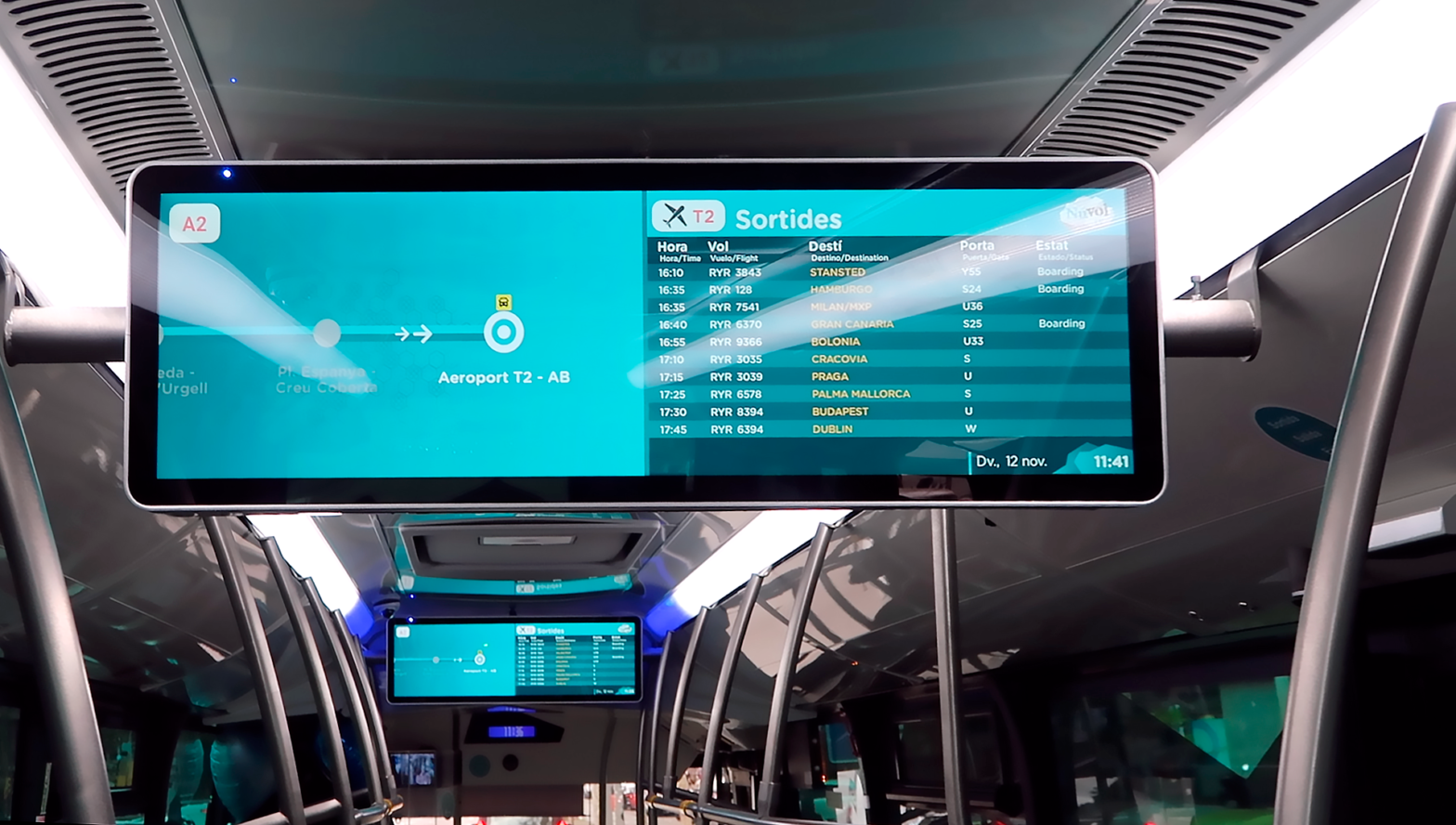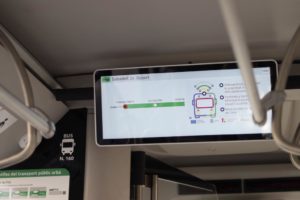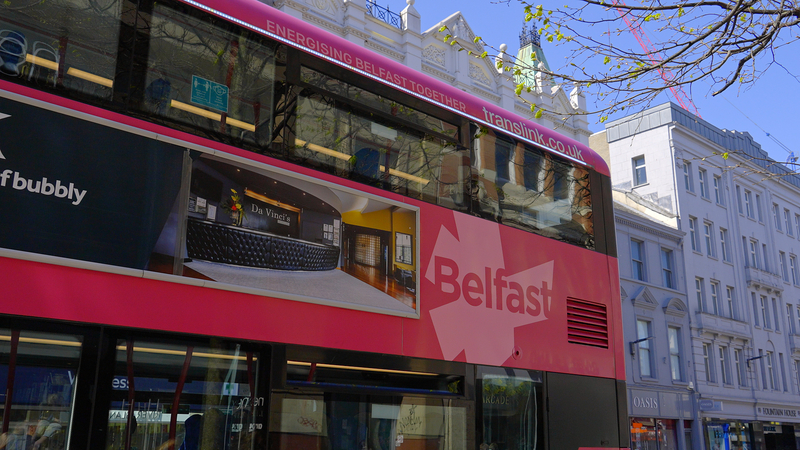
Photo: pantallas_aerobus_imagen
The trip that inspired a transformational fleet management system
05 December 2023
Malte Metzing admits he didn’t study public transit nor work in the industry. Yet he pioneered a successful cloud-based passenger information and fleet management system which has transformed bus networks benefitting both passenger experience and operations.
It was 14 years ago on a trip to the Bulgarian capital, Sofia, when Malte Metzing’s idea for a scalable fleet management solution was formed.
“The city has a lot of tram lines but all the signage was in Cyrillic letters and I was jumping on all these trams and had absolutely no possibility or idea of how to go back to my hotel,” he says.
After reluctantly forking out money to take a cab, he compared his experience to that of Berlin – which at that time had rolled out a new bus system with information signage and screens at bus stops and inside vehicles.
“I thought, ‘What’s the reason why Sofia doesn’t have this and Berlin does?’,” he explains. “There must be a way to produce a lightweight, cost-effective system that would be able to perform exactly as in Berlin.”
The first steps
Metzing started by putting together a business plan and scraped together enough funding to be able to build a prototype.
The attractive and striking screens were revolutionary and were first rolled out in Vic, a small city north of Barcelona. The 24-inch thin-film-transistor liquid-crystal display (TFT LCD) screens in vehicles showed the next stops and some commercial information – a significant step forward compared to simple LED offerings.
A forward thinker, Metzing partnered with Google using the General Transit Feed Specification – a common format for public transport schedules and associated geographic information – and was in 2010 one of the first to offer GTFS and GTFS-RT in Spain with an app informing passengers of when the next bus would arrive and on displays in bus stops.
Now in 2023, the company that Metzing founded, myBus, has been acquired by Vix Technology, a global leader in intelligent transportation systems. The screens have evolved further, not only in size (32 inches) to provide more travel information to passengers but also to deliver information on the city, including videos. The focus has also shifted gradually to fleet management and operators, with contactless ticketing solutions and people counters now available.
“When a client has a problem to solve, we look for creative ways to solve it.” Malte Metzing, General Manager Iberia, Vix Technology.
As General Manager for Vix in Iberia, Metzing continues to work with his tight knit team to iterate on a Computer-Aided Dispatch/Automatic Vehicle Location (CAD/AVL) system that has proven effective in Europe and will now form a core component of Vix’s ITS platform worldwide.
Barcelona success
Vix Technology supplies and maintains ITS solutions for 12 regional operators on a total fleet of 330 buses across the Àrea Metropolitana de Barcelona (AMB) in the Catalonia region of Spain, including the airport bus which displays flight departures. The company also services some routes in the city of Castellon, on Ibiza island, in Girona and Figueres and throughout the entire principality of Andorra.

In the AMB region, each operator is provided with a cloud-hosted central system and CAD/AVL system, as well as CCTV systems, passenger displays, APCs (automatic passenger counters) and next stop audio announcements.
Open to ideas
The success and high approval of the displays has helped play a role in changing the nature of public tenders in Spain to include the passenger experience.
“In 2010 there were still tenders coming out defining routes and defining vehicles but not defining that you have to have the screen for the passenger and arrival times,” Metzing explains.
He believes that being happy to try new things is a key factor in the success of the Barcelona team.
“We are open for innovation,” he remarks. “We’re using open source and we’re an open-minded team. When a client has a problem to solve, we look for creative ways to solve it’.”
It was during the Covid pandemic when bus occupancy was limited that screens and signage informing passengers how full the next bus was were first rolled out in Girona and Figueres, whereas previously this was used only for database analysis and for internal reporting.
Similarly, during Covid, governments across the world were forced to subsidise transport to keep them running. In Andorra, once busy bus routes to the ski slopes were running empty.

“The bus companies calculated that the government owed them, let’s say as an example, €2 million,” he says. “But because of our cloud-based ticketing platform and occupancy recordings, the government was able to turn around and say, ‘No, we owe you precisely €1,574,012.’”
And in Andorra the principality has started to produce its own content and present that on the displays inside the vehicles.
“There are special ski lines that run during winter and we can talk to different ski stations and show information about the weather, ski conditions, avalanche risk level, and which slopes are closed, and display this real-time information,” he adds.
One-stop-shop
Metzing emphasises the ease of the solution and that it is uncomplicated to scale and add functions according to different tenders.
“When we add a function, it is good for everybody,” he explains. “When Barcelona is asking for something, it’s very likely that Madrid would ask for it so it makes absolute sense.”
Long gone are the days when a server for all the data had to be physically stored in that particular city. The move to the cloud has been spurred by companies like Vix which has allowed for further innovation.
“The idea behind the vision is to have one tool and everybody would be able to connect to one tool,” he adds. “It brings me back to my Sofia trip and how this all started – to have a scalable, cost-efficient platform every city can use.”
Some features rolled out across the Àrea Metropolitana de Barcelona (AMB) in Catalonia include:
- Data management, such as schedule import and checking
- Prediction generation
- Cloud-hosted CAD/AVL solution
- Central system used to manage the services
- Operator reports and historical reporting
- Driver Console (touchscreen tablet)
- On board computer to support CAD/AVL
- CCTV security cameras and video recorders with covert alarm
- On board Passenger Information Displays (PID) with custom media content, fixed and scrolling information
- Automatic Passenger Counters (APCs)
- Content Management System (CMS) for managing displays
- External speaker for hearing impaired
- VoIP communications platform
- Real-time reporting
- Open-source technology
In partnership with:
















